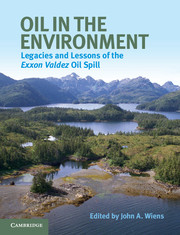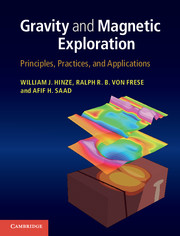Refine listing
Actions for selected content:
1211 results in Ebooks in petroleum sciences
Use of acronyms
-
- Book:
- Oil in the Environment
- Published online:
- 05 July 2013
- Print publication:
- 18 July 2013, pp xvii-xvii
-
- Chapter
- Export citation
Part III - Biological effects
-
- Book:
- Oil in the Environment
- Published online:
- 05 July 2013
- Print publication:
- 18 July 2013, pp 198-200
-
- Chapter
- Export citation
11 - Shoreline biota
-
-
- Book:
- Oil in the Environment
- Published online:
- 05 July 2013
- Print publication:
- 18 July 2013, pp 241-262
-
- Chapter
- Export citation
Part IV - Assessing oil spill effects and ecological recovery
-
- Book:
- Oil in the Environment
- Published online:
- 05 July 2013
- Print publication:
- 18 July 2013, pp 380-382
-
- Chapter
- Export citation
7 - Understanding subsurface contamination using conceptual and mathematical models
-
-
- Book:
- Oil in the Environment
- Published online:
- 05 July 2013
- Print publication:
- 18 July 2013, pp 144-175
-
- Chapter
- Export citation
10 - Assessing effects and recovery from environmental accidents
-
-
- Book:
- Oil in the Environment
- Published online:
- 05 July 2013
- Print publication:
- 18 July 2013, pp 220-240
-
- Chapter
- Export citation
16 - Characterizing ecological risks, significance, and recovery
-
-
- Book:
- Oil in the Environment
- Published online:
- 05 July 2013
- Print publication:
- 18 July 2013, pp 383-419
-
- Chapter
- Export citation
Part II - Oil in the environment
-
- Book:
- Oil in the Environment
- Published online:
- 05 July 2013
- Print publication:
- 18 July 2013, pp 54-56
-
- Chapter
- Export citation
A bibliographic note
-
-
- Book:
- Oil in the Environment
- Published online:
- 05 July 2013
- Print publication:
- 18 July 2013, pp xx-xxi
-
- Chapter
- Export citation
15 - Sea otters: trying to see the forest for the trees since the Exxon Valdez
-
-
- Book:
- Oil in the Environment
- Published online:
- 05 July 2013
- Print publication:
- 18 July 2013, pp 348-379
-
- Chapter
- Export citation
8 - Removal of oil from shorelines: biodegradation and bioremediation
-
-
- Book:
- Oil in the Environment
- Published online:
- 05 July 2013
- Print publication:
- 18 July 2013, pp 176-197
-
- Chapter
- Export citation
Prologue
-
- Book:
- Oil in the Environment
- Published online:
- 05 July 2013
- Print publication:
- 18 July 2013, pp xxii-xxvii
-
- Chapter
- Export citation
13 - Pacific herring
-
-
- Book:
- Oil in the Environment
- Published online:
- 05 July 2013
- Print publication:
- 18 July 2013, pp 292-317
-
- Chapter
- Export citation
1 - Introduction and background
-
-
- Book:
- Oil in the Environment
- Published online:
- 05 July 2013
- Print publication:
- 18 July 2013, pp 3-36
-
- Chapter
- Export citation
14 - Oil and marine birds in a variable environment
-
-
- Book:
- Oil in the Environment
- Published online:
- 05 July 2013
- Print publication:
- 18 July 2013, pp 318-347
-
- Chapter
- Export citation
Part I - Introduction and background
-
- Book:
- Oil in the Environment
- Published online:
- 05 July 2013
- Print publication:
- 18 July 2013, pp 1-2
-
- Chapter
- Export citation
5 - Ancient sites and emergency response: cultural resource protection
-
-
- Book:
- Oil in the Environment
- Published online:
- 05 July 2013
- Print publication:
- 18 July 2013, pp 98-115
-
- Chapter
- Export citation

Oil in the Environment
- Legacies and Lessons of the Exxon Valdez Oil Spill
-
- Published online:
- 05 July 2013
- Print publication:
- 18 July 2013

Gravity and Magnetic Exploration
- Principles, Practices, and Applications
-
- Published online:
- 05 May 2013
- Print publication:
- 14 March 2013
Frontmatter
-
- Book:
- Near-Surface Applied Geophysics
- Published online:
- 05 April 2013
- Print publication:
- 25 April 2013, pp i-vi
-
- Chapter
- Export citation
